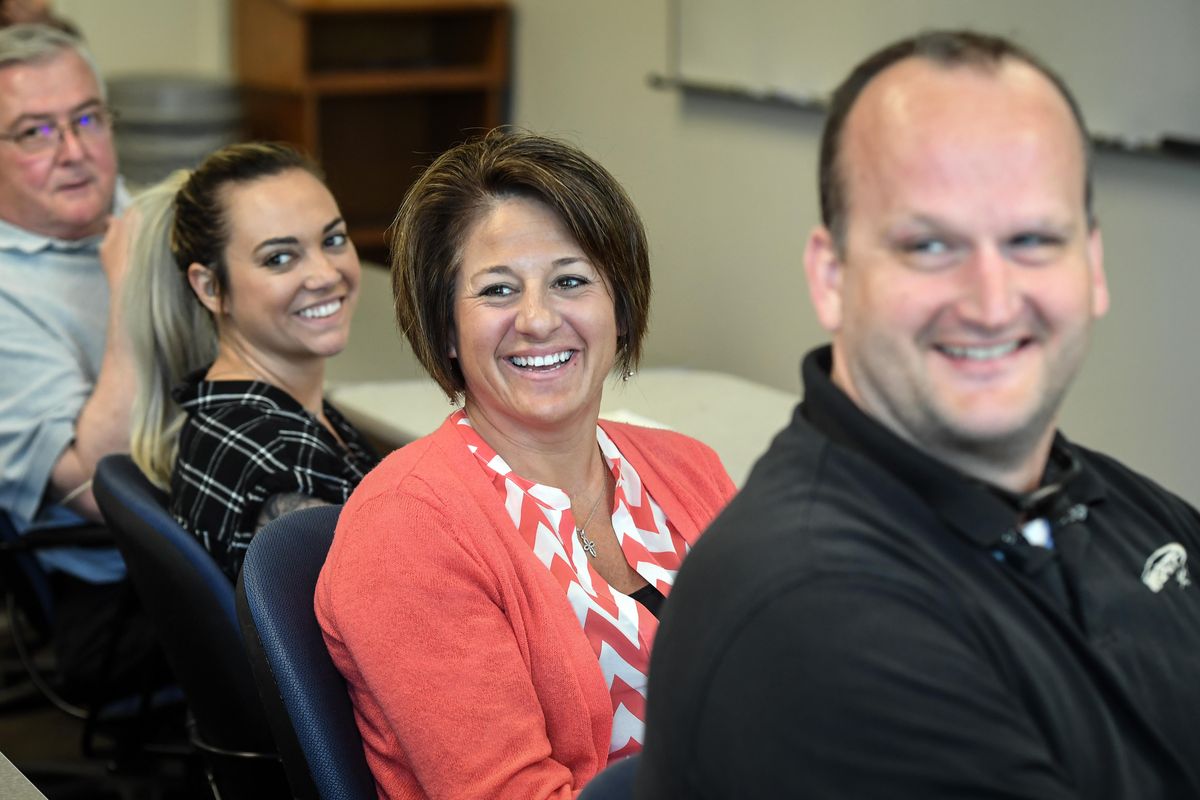Whitworth students agree: Airway Heights prison’s dog training program is a net positive for all involved

Whitworth University junior Hannah Stafford had never met a prison inmate before. Especially not one whose job it is to train and rehabilitate rescue dogs inside the high, razor sharp fences of Airway Heights Corrections Center.
And yet, along with 24 of her classmates, that’s exactly what she did earlier this year – all part of a semester-long project in her courts and corrections class that aimed to analyze the prison’s dog training program through a lens of strategic planning.
The efforts of their studies culminated last month, when they visited the tail end of the 10-week-long initiative to watch a dog training graduation, and talk one-on-one with inmate handlers. What she and her classmates found was – overwhelmingly – it’s a net positive for all involved.
“I feel like it definitely helps with the rehabilitation,” said Stafford. “Which is the main goal, I hope.”
Their results were presented Monday before a panel of four Airway Heights Corrections Center employees, including Ben Frier, the dog program’s director, who said the presentation was both “good” and “very cool.” He also thanked the students for their work.
For about an hour, they watched four groups share their findings, which implemented what’s called a SWOT analysis – a technique that identifies strengths, weaknesses, opportunities and threats in an organization. Or in this case, an inmate-led dog training service.
Class professor Jacqueline Van Wormer – who in 2017 published a study in the Prison Journal titled “Digging Deeper: Exploring the Value of Prison-Based Dog Handling Programs” while both a criminology professor at Washington State University Spokane and an administrator for Spokane County’s criminal justice division – said she hoped the class would help further her research.
She found dog-training initiatives, like the one in Airway Heights, showed evidence of higher levels of inmate accountability, a decrease in infractions and contributed to a generally safer and healthier prison environment than in prisons without such programs.
The next step, she said, was to come at it from a planning perspective and test to see if positives outweighed the negatives. And, if it can give students a better sense of the world they live in, even better.
“I wanted them to see it up close and up front,” she said. “Students hear a lot of theory, and they read a lot about what practice is supposed to be like. But inside a prison and inside a police department, operations are much different.”
Van Wormer and a few students plan to conduct more research next semester looking into how dog trainers can be credited for their work. As it stands now, inmates cannot become certified dog trainers in Washington state.
The four groups of students that presented Monday all agreed that the program led to better inmate behavior and opened avenues for rehabilitation. Similar to Van Wormer’s study, they said inmates were generally better adjusted, and in many cases, improved their behavior in order to be considered in the first place.
However, they also agreed communication was an issue, especially when it came to prison staff interacting with dogs and their handlers. Because the dogs are rescues, the first few weeks of training often mean nobody other than the dogs’ handlers should touch them. They wear a red collar, which means hands off.
The students said those rules are often ignored.
“There’s a power imbalance,” said student Lindsey Lebret. “The corrections officers don’t understand the rules.”
Other areas of improvement included allowing the inmate handlers and their dogs to go outside, even during a lock down, if the dog has to use the bathroom.
Included in that recommendation: more tools to pick up what’s left behind.
“Another issue? Poop bags,” said Tamara Tokarz. “They need more of them.”
Annie Sawyer, who was one of the four prison officials in attendance, said the students’ advice was overall considerate. She especially liked an idea floated by one group to send out a newsletter each week updating inmates and staff on progress. It could even include a “thank you” section from families who have adopted one of the dogs.
While not in attendance, Airway Heights Correction Center Superintendent James Key said not much about the research particularly surprised him. But that’s only because it confirmed what he already believed.
“When I can see someone who has a life sentence, and I can see the change in their behavior, the emotion they show, it may be the first time these individuals have taken the time to care for another living thing,” he said. “That’s the powerful thing for me.”